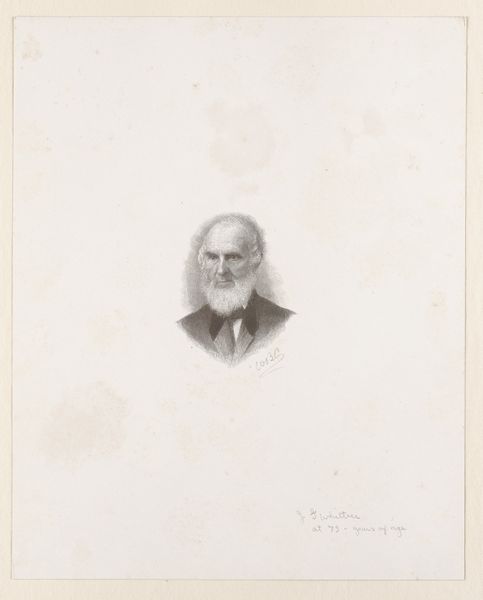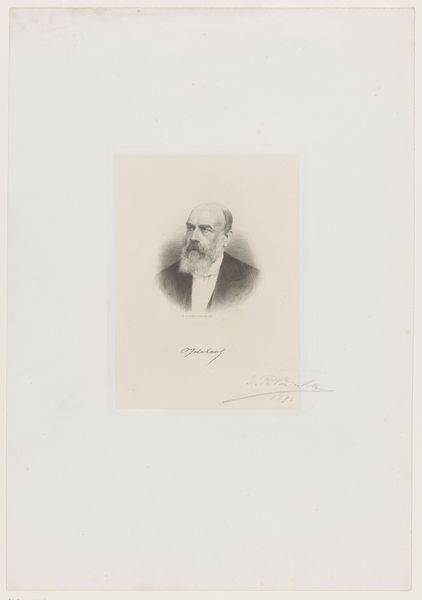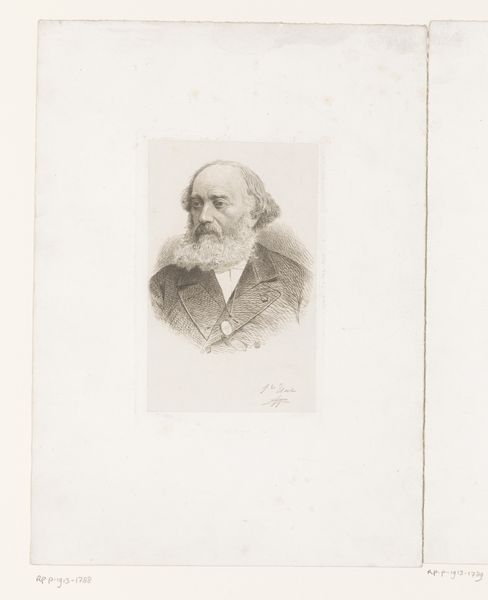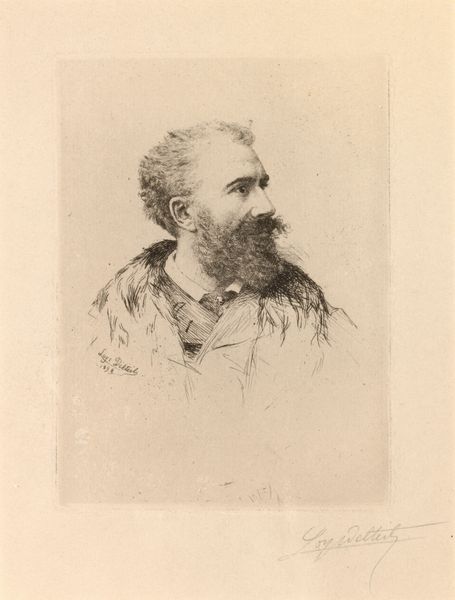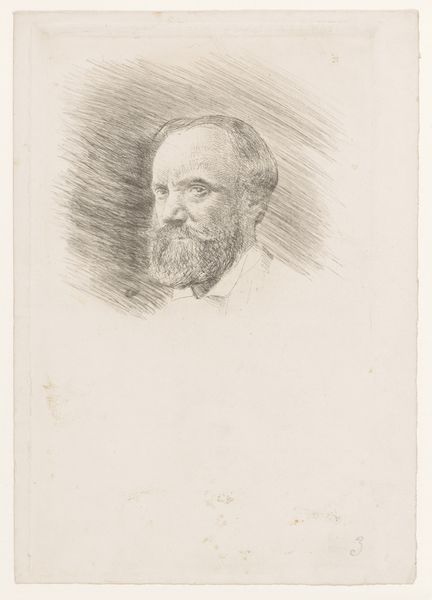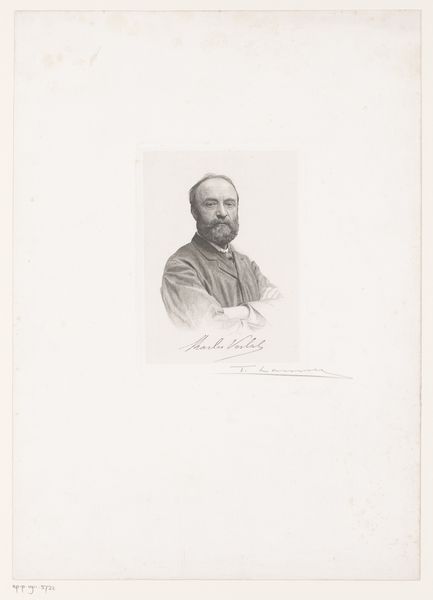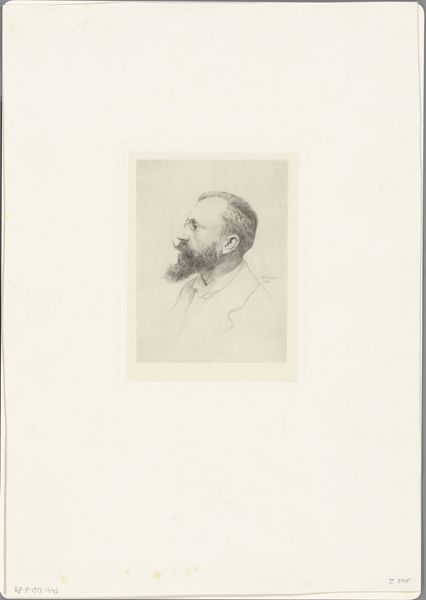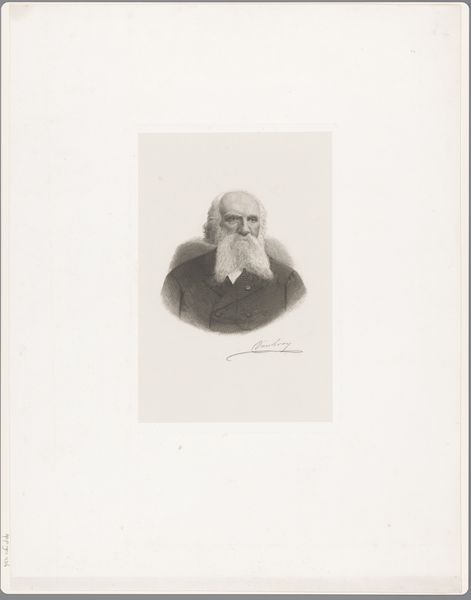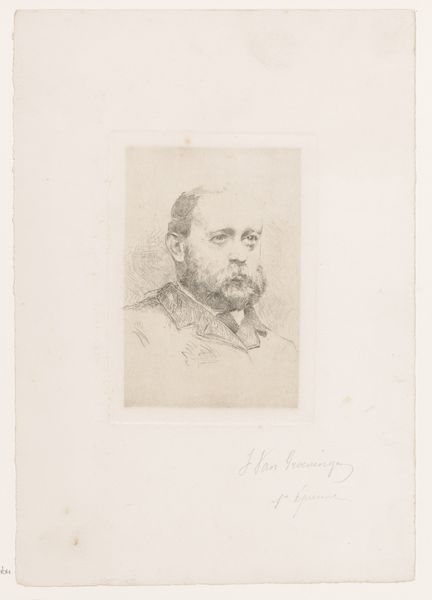
drawing, print, paper, pencil, engraving
#
portrait
#
pencil drawn
#
drawing
#
light pencil work
# print
#
pencil sketch
#
paper
#
pencil
#
engraving
#
realism
Dimensions: height 157 mm, width 121 mm
Copyright: Rijks Museum: Open Domain
Auguste Danse made this portrait of an unknown man, possibly a relative, using etching in 1863. Consider the time and place: Belgium, a rapidly industrializing nation where class distinctions were hardening. How could someone like Danse – trained at the Royal Academy of Fine Arts in Brussels, come to produce such an image? Etching as a medium was in decline, supplanted by photography in the mass production of images. What social function did it have in the 1860s? Here, the sitter’s solid, bourgeois appearance tells us something. The image gives us clues: the meticulous detail, the intimate scale, the way it invokes older traditions of portraiture. Danse subtly elevates his subject, lending him a sense of dignity and importance in a society increasingly defined by wealth and status. To fully understand the significance of this work, we need to look at the art institutions, the market for art, and the social functions of portraiture in 19th-century Belgium.
Comments
No comments
Be the first to comment and join the conversation on the ultimate creative platform.
